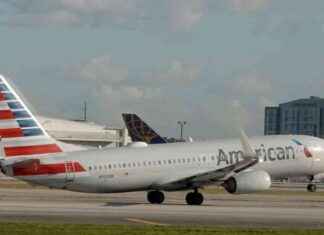Students talk about Cleveland’s new School of Science and Health
CLEVELAND, Ohio – Not every high school can give students a head start on a possible neurology career.
Mario Wilson’s can.
Wilson is a sophomore at the new School of Science and Health, a new high school jointly created this school year by the Cleveland school district and MetroHealth Medical Center.
Based right inside the main hospital on W 25th Street, the school is giving Wilson and his 55 classmates an inside look at the inner workings of the hospital. Tours of things like the Lifeflight rescue helicopters, the laundry room, kitchens and where surgical instruments are sterilized are built into their day, right alongside their standard math and English lessons classes.
And as a huge bonus, the school has just paired him up with a neurologist on staff as a mentor.
“I will learn a lot about the day-to-day of what its like to be a neurologist and what its like to work in the hospital,” Wilson said.
Modesto Matos, another sophomore, likes the school even though he isn’t really looking to join a medical field. A member of the school’s ROTC program, he’s wants to be a police officer or security guard.
No problem, said the school, which paired him with a hospital security officer as his mentor.
And Chantayne Petty wants to be a social worker, possibly at a hospital, so the school will have social workers on staff talk with students.
“I feel like we have more opportunities at this school,” she said.
The school, which just started this fall, grew out of a small program the hospital ran for students at the nearby Lincoln-West High School that brought students over to the hospital and gave them an inside look at the workings of a $1 billion a year institution with 7,300 employees.
The full school expands that much Betxlarge further.
Over the summer, the district and hospital carved out part of a former research area of the hospital and remodeled it into six classrooms. The district added eight teachers to handle the 56 10th graders from Lincoln-West and from around the city that enrolled this fall.
Even more ninth graders are taking their initial classes at Lincoln-West now and will start spending time at the hospital this spring. As students advance to hjgher grades grades and new ninth graders come in every year, numbers will grow and the hospital and district will likely add new classrooms.
The new school is a prime example of how the Cleveland school district is promoting specialized schools and school choice as part of its “portfolio model” for the district.
The school also draws on several aspects of the district’s long-term improvement plan. Connecting with community institutions to bring extra resources and perspectives to students is a major goal, as is finding ways to expose students to different career opportunities and people working in different fields.
The latter is a significant focus of the school. Along with their more-traditional classes, all students take “career explorations,” a class that teaches them to build resumes and start creating a portfolio of work and credentials to help them land jobs.
It also includes regular interaction with hospital staff. On a recent Wednesday, that took the form of a talk by human resources staff about how to handle job interviews. In previous weeks, that involved a trip to the hospital’s helipad to meet rescue helicopter crews, a visit to the morgue, to the laundry facilities and kitchens. On tap in the next few weeks is a visit to an operating .
Stacy Johnson, the hospital’s manager of education programs with the community, said the focus is on health careers, but many other jobs will be included.
“Not everybody wants to be a nurse or a physician,” she said. “There are hundreds of careers here in the hospital. “
Principal Christopher Thompson said that Metrohealth “has almost every job and industry you can think of.”
“They (students) are researching jobs, their salaries, their expectations and what schooling they need,” Thompson said. “It gives them a chance to dive into fields they might not even know about.”
That’s a huge step towards breaking the cycle of poverty that has affected a few generations of some Cleveland families, said Case Western Reserve University poverty researcher Claudia Coulton.
“Their (students) horizons are limited,” Coulton said. “They don’t have role models. They don’t see all the jobs out there that someone like thjm can realistically aspire to if they can just begin to get a foot in the door, or some small amount of training.”
Students may need more support, Coulton said, but programs like the new school are a crucial step.
“It’s a piece of the puzzle that has to fill in,” she said.
The traditional English, math and science classes are also a little different here. The school is trying to connect lessons in those areas to aspects of the hospital, though the “project-based learning” here is not as far along yet as at other district schools that have used that approach for longer.
Classes are avoid the traditional pattern of teachers standing in front of the class talking to students in rows. Students are grouped in “pods” of a few desks and interact with each other.
The school also has a so-called “blended” learning model in which each student is given a laptop to do much of their work online. Students sit in the classroom working on lessons through Fuel Ed, the online system the district purchased, while teachers bounce between students to answer questions and help students through items they have trouble with.
“We’re moving away from the traditional way of school and providing more of a mastery platform where kids move at a different pace,” Thompson said.
Our editors found this article on this site using Google and regenerated it for our readers.





